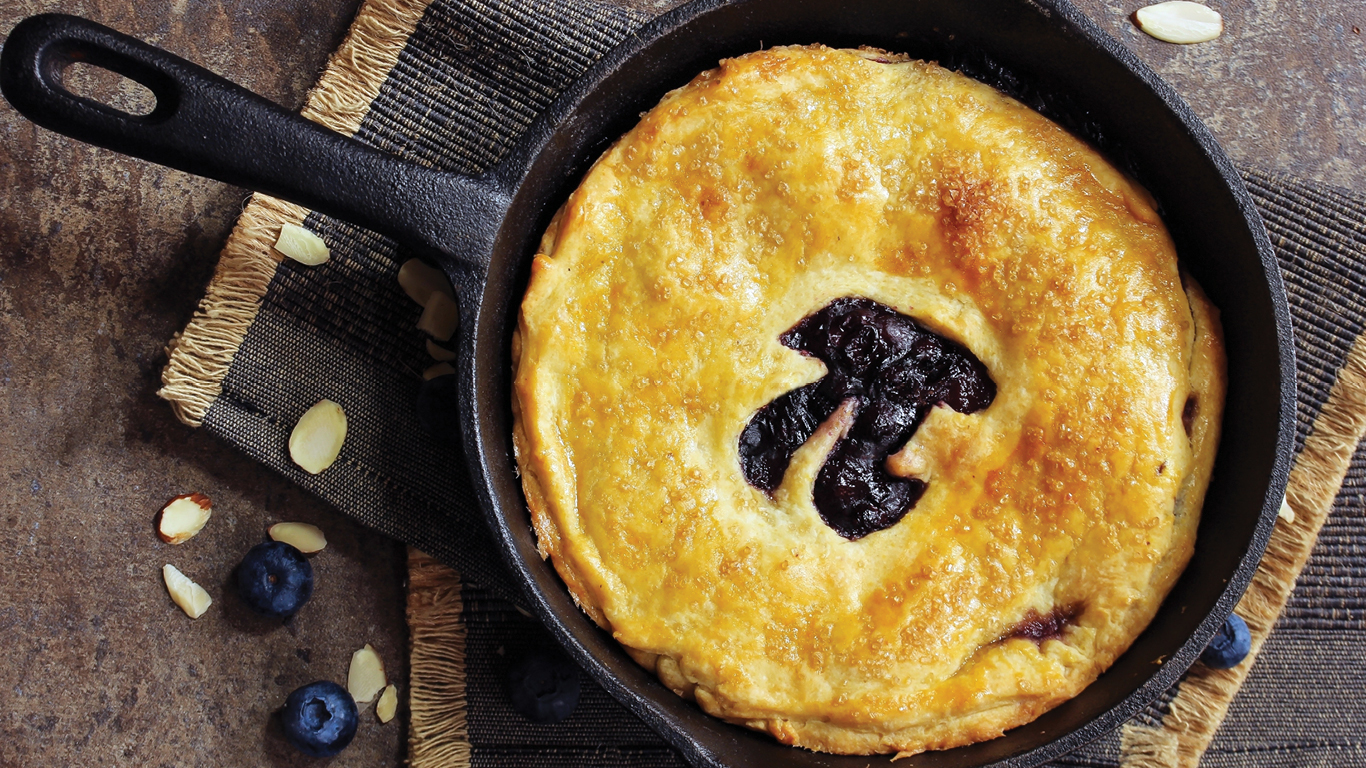
March 14 is International Pi Day, an annual celebration of the mathematical constant used in calculating the diameter and area of a circle. Often, these celebrations involve pie. Over here at Statistics Canada, we are 3.14 times more likely to share some π-related and pie-related facts and figures. You know we love math—and pastries too.
More than 3.14 pie and food numbers
Firstly, how about some fresh fruit for your favourite pie? In 2022, Canadian farmers produced 380,571 tonnes of apples, 180,117 tonnes of blueberries, 86,785 tonnes of pumpkins, 25,072 tonnes of strawberries, 20,185 tonnes of peaches, 18,345 tonnes of sweet cherries, and 6,909 tonnes of fresh raspberries.
Also, in 2022, nearly 2.5 million metric tonnes of wheat flour were produced in Canada. Get baking!
And while we’re talking about food—our annual food availability series measures the amount of various categories or types of food available for consumption in Canada per person (on an annual basis). Since we started tracking in 1960, there have been nine times that this number has landed on exactly 3.14.
For example, in 2003, there were 3.14 kilograms of fresh broccoli available per person, along with 3.14 kilograms of oatmeal and rolled oats. In 2004, there were 3.14 kilograms of fresh corn available per person. In both 1992 and 1998, there were 3.14 kilograms of peanuts available per person.
And let’s head back all the way to 1964, when 3.14 litres of apple juice were available per Canadian.
Visiting some pie places
And turning back to pie—you’ll be happy to know there are loads of place names that involve “pie” or something circular, and the Canadian Geographical Names Database won’t give you the runaround.
How about a trip to tasty-sounding Pie Island in Ontario? There’s also a Pie Lake in Ontario and one in Manitoba. In Newfoundland and Labrador, you’ll find Pie Pond. And just south of downtown Montréal, there’s Île Mud Pie.
There are an abundance of “round” places across the country, including West Round Lake, north of Inuvik, Northwest Territories. On Cape Breton Island in Nova Scotia, there’s the community of Round Island. Alberta’s aptly named Two Round Lakes are exactly as they sound: same shape and size, and side by side.
How about hiking up Circle Mountain in British Columbia, or splashing through Half Circle Creek in Manitoba?
If we’re circling back to the approximation of π—according to the 2021 Census of Population, these three communities have a land area of exactly 3.14 square kilometres: Moose Point 79, Ontario; Lac Simon, Quebec; and Grenfell, Saskatchewan. You could say these residents have the Life of Pi.
Working with pi all day
And not to go off on another tangent, but the 2021 Census of Population counted several occupations involving mathematics.
Over half a million (554,450) Canadians were employed in professional occupations in applied sciences, including 27,530 mathematicians, statisticians, actuaries and data scientists (some of those right here at Statistics Canada!). Another 47,420 worked as architects, urban planners and land surveyors; 202,610 as computer and information systems professionals; and 276,890 as computer, software and web designers and developers.
There were 239,760 Canadians employed in professional occupations in engineering—these included civil, mechanical, electrical and aerospace engineering, among others.
Another 96,215 Canadians were employed in professional occupations in natural sciences, which include physicists, astronomers, chemists, biologists and meteorologists.
As well, 22,435 Canadians were employed as economists and economic policy researchers and analysts. (Some of those are here at Statistics Canada as well!)
As for who teaches the math for all those future jobs? There were 691,185 Canadians employed in professional occupations in education services—from kindergarten teachers to university professors and everything in between.
StatsCAN app
Did you know you can read StatsCAN Plus articles and more on the StatsCAN app? If you’re already using the app, let us know what you think by leaving a review in the Apple App Store and Google Play.
Contact information
For more information, contact the Statistical Information Service (toll-free 1-800-263-1136; 514-283-8300; infostats@statcan.gc.ca) or Media Relations (statcan.mediahotline-ligneinfomedias.statcan@statcan.gc.ca).
